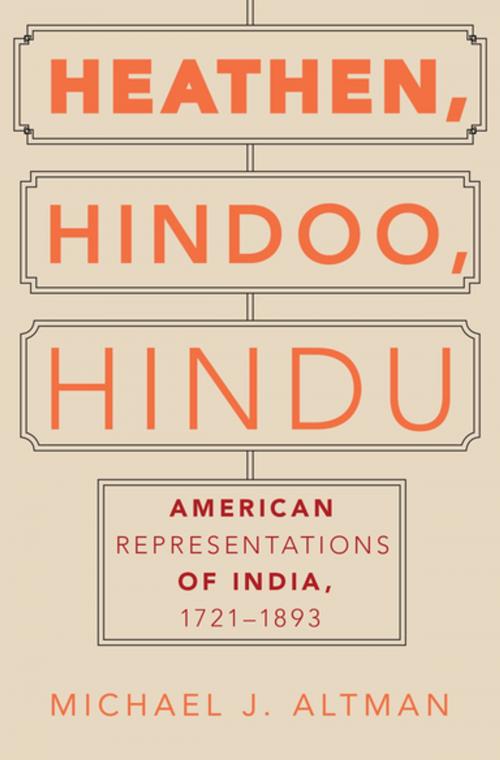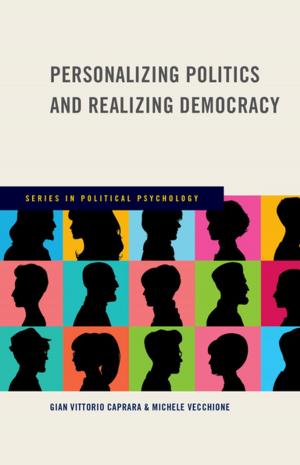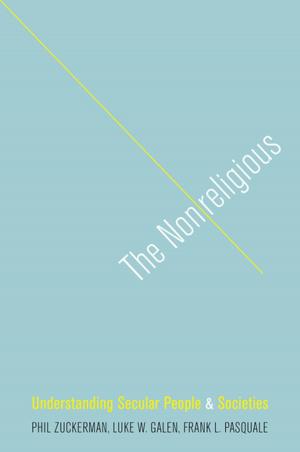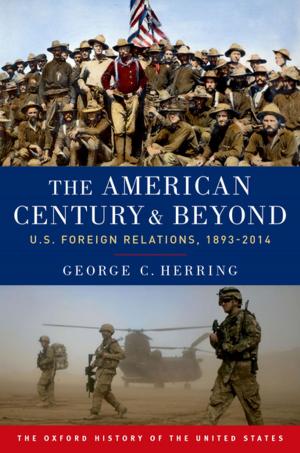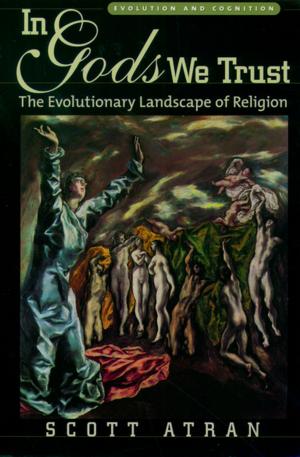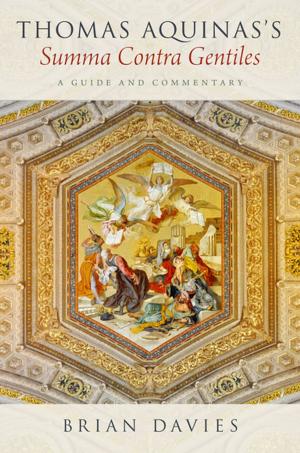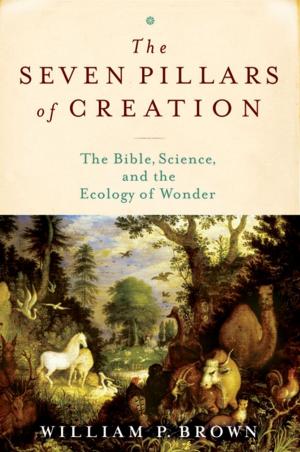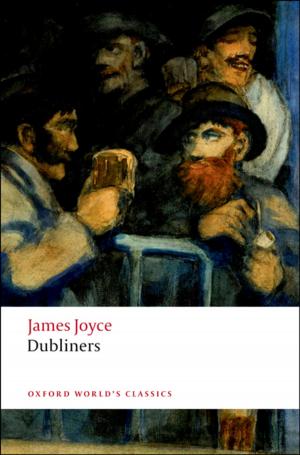Heathen, Hindoo, Hindu
American Representations of India, 1721-1893
Nonfiction, Religion & Spirituality, Eastern Religions, Hinduism, History, Americas, United States, 19th Century| Author: | Michael J. Altman | ISBN: | 9780190654948 |
| Publisher: | Oxford University Press | Publication: | July 3, 2017 |
| Imprint: | Oxford University Press | Language: | English |
| Author: | Michael J. Altman |
| ISBN: | 9780190654948 |
| Publisher: | Oxford University Press |
| Publication: | July 3, 2017 |
| Imprint: | Oxford University Press |
| Language: | English |
Today, there are more than two million Hindus in America. But before the twentieth century, Hinduism was unknown in the United States. But while Americans did not write about "Hinduism," they speculated at length about "heathenism," "the religion of the Hindoos," and "Brahmanism." In Heathen, Hindoo, Hindu,Michael J. Altman argues that this is not a mere sematic distinction-a case of more politically correct terminology being accepted over time-but a way that Americans worked out their own identities. American representations of India said more about Americans than about Hindus. Cotton Mather, Hannah Adams, and Joseph Priestley engaged the larger European Enlightenment project of classifying and comparing religion in India. Evangelical missionaries used images of "Hindoo heathenism" to raise support at home. Unitarian Protestants found a kindred spirit in the writings of Bengali reformer Rammohun Roy. Popular magazines and common school books used the image of dark, heathen, despotic India to buttress Protestant, white, democratic American identity. Transcendentalists and Theosophists imagined the contemplative and esoteric religion of India as an alternative to materialist American Protestantism. Hindu delegates and American speakers at the 1893 World's Parliament of Religions engaged in a protracted debate about the definition of religion in industrializing America. Heathen, Hindoo, Hindu is a groundbreaking analysis of American representations of religion in India before the turn of the twentieth century. Altman reorients American religious history and the history of Asian religions in America, showing how Americans of all sorts imagined India for their own purposes. The questions that animated descriptions of heathens, Hindoos, and Hindus in the past, he argues, still animate American debates today.
Today, there are more than two million Hindus in America. But before the twentieth century, Hinduism was unknown in the United States. But while Americans did not write about "Hinduism," they speculated at length about "heathenism," "the religion of the Hindoos," and "Brahmanism." In Heathen, Hindoo, Hindu,Michael J. Altman argues that this is not a mere sematic distinction-a case of more politically correct terminology being accepted over time-but a way that Americans worked out their own identities. American representations of India said more about Americans than about Hindus. Cotton Mather, Hannah Adams, and Joseph Priestley engaged the larger European Enlightenment project of classifying and comparing religion in India. Evangelical missionaries used images of "Hindoo heathenism" to raise support at home. Unitarian Protestants found a kindred spirit in the writings of Bengali reformer Rammohun Roy. Popular magazines and common school books used the image of dark, heathen, despotic India to buttress Protestant, white, democratic American identity. Transcendentalists and Theosophists imagined the contemplative and esoteric religion of India as an alternative to materialist American Protestantism. Hindu delegates and American speakers at the 1893 World's Parliament of Religions engaged in a protracted debate about the definition of religion in industrializing America. Heathen, Hindoo, Hindu is a groundbreaking analysis of American representations of religion in India before the turn of the twentieth century. Altman reorients American religious history and the history of Asian religions in America, showing how Americans of all sorts imagined India for their own purposes. The questions that animated descriptions of heathens, Hindoos, and Hindus in the past, he argues, still animate American debates today.
